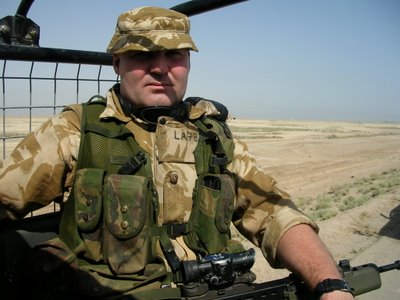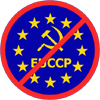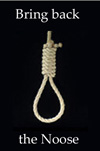Tuesday, September 26, 2006
This is why there is slaughter in Darfur
Read thisEverything you wanted to know about Sudan before it's destroyed by war if knowone helps them!
Location: Northern Africa, bordering the Red Sea, between Egypt and Eritrea
Population: 41,236,378(Until they start dying in great big batches!)
Capital: Khartoum
Flag description: Three equal horizontal bands of red (top), white, and black with a green isosceles triangle based on the hoist side
Currency: Sudanese dinar (SDD)
Climate: Tropical in south; arid desert in north; rainy season varies by region (April to November)
Terrain: Generally flat, featureless plain; mountains in far south, northeast and west; desert dominates the north
Natural resources: Petroleum (OIL),small reserves of iron ore, copper, chromium ore, zinc, tungsten, mica, silver, gold, hydropower
Religions: Sunni Muslim 70% (in north), indigenous beliefs 25%, Christian 5% (mostly in south and Khartoum)
Languages: Arabic (official), Nubian, Ta Bedawie, diverse dialects of Nilotic, Nilo-Hamitic, Sudanic languages, English (program of "Arabization" in process)
Ethnic groups: Black 52%, Arab 39%, Beja 6%, foreigners 2%, other 1%
Environment-current issues: Inadequate supplies of potable water; wildlife populations threatened by excessive hunting; soil erosion; desertification; periodic drought
Legal system: Based on English common law and Shari'a law; as of 20 January 1991, the now defunct Revolutionary Command Council imposed Shari'a law in the northern states; Shari'a law applies to all residents of the northern states regardless of their religion; some separate religious courts; accepts compulsory ICJ jurisdiction, with reservations; the southern legal system is still developing under the CPA following the civil war; Shari'a law will not apply to the southern states
Government type: Government of National Unity (GNU) - the National Congress Party (NCP) and Sudan People's Liberation Movement (SPLM) formed a power-sharing government under the 2005 Comprehensive Peace Agreement (CPA); the NCP, which came to power by military coup in 1989, is the majority partner; the agreement stipulates national elections for the 2008 - 2009 timeframe.
Economic overview: Sudan has turned around a struggling economy with sound economic policies and infrastructure investments, but it still faces formidable economic problems, starting from its low level of per capita output. From 1997 to date, Sudan has been implementing IMF macroeconomic reforms. In 1999, Sudan began exporting crude oil and in the last quarter of 1999 recorded its first trade surplus, which, along with monetary policy, has stabilized the exchange rate. Increased oil production, revived light industry, and expanded export processing zones helped sustain GDP growth at 8.6% in 2004. Agricultural production remains Sudan's most important sector, employing 80% of the work force, contributing 39% of GDP, and accounting for most of GDP growth, but most farms remain rain-fed and susceptible to drought. Chronic instability - resulting from the long-standing civil war between the Muslim north and the Christian/pagan south, adverse weather, and weak world agricultural prices - ensure that much of the population will remain at or below the poverty line for years.
Location: Northern Africa, bordering the Red Sea, between Egypt and Eritrea
Population: 41,236,378(Until they start dying in great big batches!)
Capital: Khartoum
Flag description: Three equal horizontal bands of red (top), white, and black with a green isosceles triangle based on the hoist side
Currency: Sudanese dinar (SDD)
Climate: Tropical in south; arid desert in north; rainy season varies by region (April to November)
Terrain: Generally flat, featureless plain; mountains in far south, northeast and west; desert dominates the north
Natural resources: Petroleum (OIL),small reserves of iron ore, copper, chromium ore, zinc, tungsten, mica, silver, gold, hydropower
Religions: Sunni Muslim 70% (in north), indigenous beliefs 25%, Christian 5% (mostly in south and Khartoum)
Languages: Arabic (official), Nubian, Ta Bedawie, diverse dialects of Nilotic, Nilo-Hamitic, Sudanic languages, English (program of "Arabization" in process)
Ethnic groups: Black 52%, Arab 39%, Beja 6%, foreigners 2%, other 1%
Environment-current issues: Inadequate supplies of potable water; wildlife populations threatened by excessive hunting; soil erosion; desertification; periodic drought
Legal system: Based on English common law and Shari'a law; as of 20 January 1991, the now defunct Revolutionary Command Council imposed Shari'a law in the northern states; Shari'a law applies to all residents of the northern states regardless of their religion; some separate religious courts; accepts compulsory ICJ jurisdiction, with reservations; the southern legal system is still developing under the CPA following the civil war; Shari'a law will not apply to the southern states
Government type: Government of National Unity (GNU) - the National Congress Party (NCP) and Sudan People's Liberation Movement (SPLM) formed a power-sharing government under the 2005 Comprehensive Peace Agreement (CPA); the NCP, which came to power by military coup in 1989, is the majority partner; the agreement stipulates national elections for the 2008 - 2009 timeframe.
Economic overview: Sudan has turned around a struggling economy with sound economic policies and infrastructure investments, but it still faces formidable economic problems, starting from its low level of per capita output. From 1997 to date, Sudan has been implementing IMF macroeconomic reforms. In 1999, Sudan began exporting crude oil and in the last quarter of 1999 recorded its first trade surplus, which, along with monetary policy, has stabilized the exchange rate. Increased oil production, revived light industry, and expanded export processing zones helped sustain GDP growth at 8.6% in 2004. Agricultural production remains Sudan's most important sector, employing 80% of the work force, contributing 39% of GDP, and accounting for most of GDP growth, but most farms remain rain-fed and susceptible to drought. Chronic instability - resulting from the long-standing civil war between the Muslim north and the Christian/pagan south, adverse weather, and weak world agricultural prices - ensure that much of the population will remain at or below the poverty line for years.




























